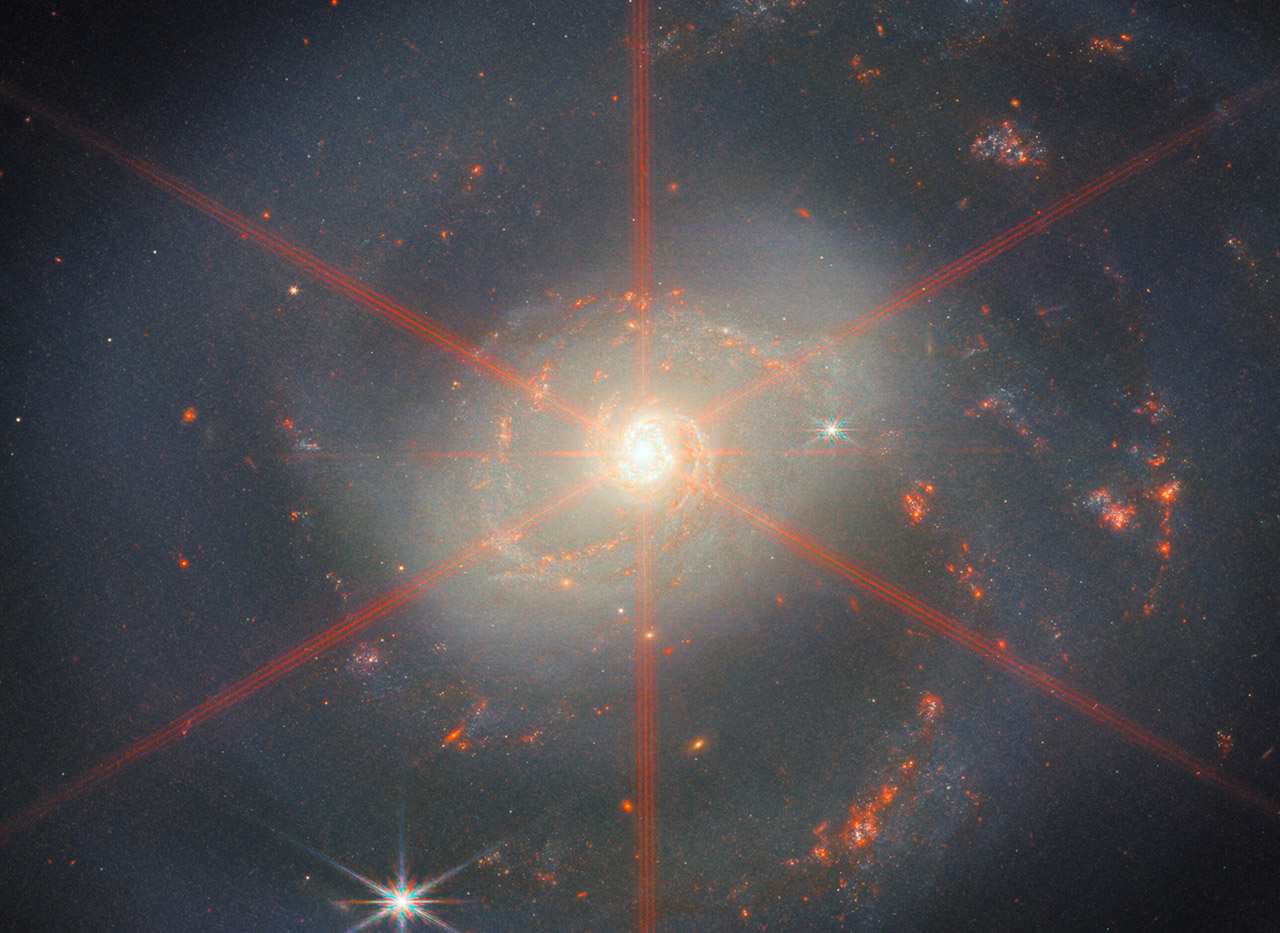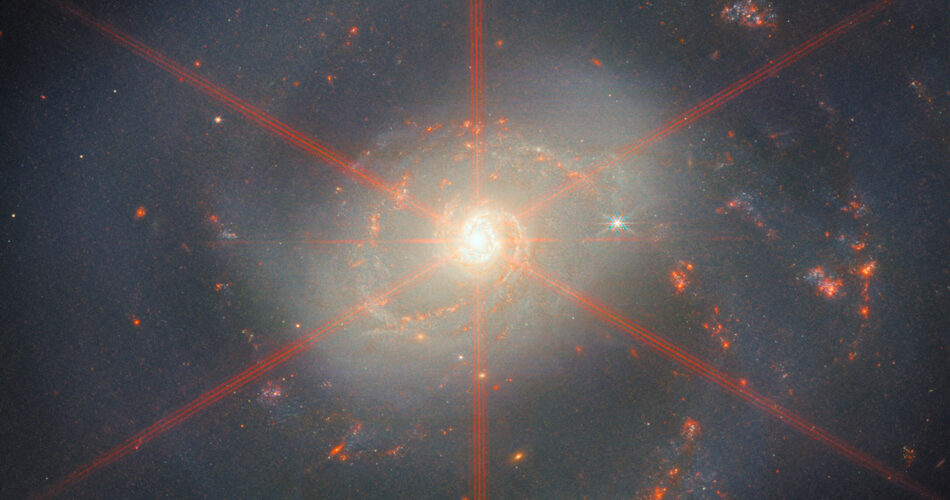
NASA / ESA’s James Webb Space Telescope recently captured a wreath-like star formation 220 million light-years from Earth in the Pegasus constellation, called NGC 7469. This face-on spiral galaxy boasts an active galactic nucleus (AGN), which is an extremely bright central region dominated by the light emitted by dust and gas as it falls into the galaxy’s central black hole.

NGC 7469 allows astronomers to study the relationship between AGNs and starburst activity since it hosts an active galactic nucleus that is surrounded by a starburst ring at a distance of a just 1500 light-years. Its compact nature combined with the presence of a great deal of dust have made it tough for scientists to achieve both the resolution and sensitivity needed to study this relationship in the infrared. Thanks to Webb, they’re now able to explore the galaxy’s starburst ring, the central AGN, as well as the gas and dust in between.
A prominent feature of this image is the striking six-pointed star that perfectly aligns with the heart of NGC 7469. Unlike the galaxy, this is not a real celestial object, but an imaging artifact known as a diffraction spike, caused by the bright, unresolved AGN,” said the European Space Agency.
Source link



